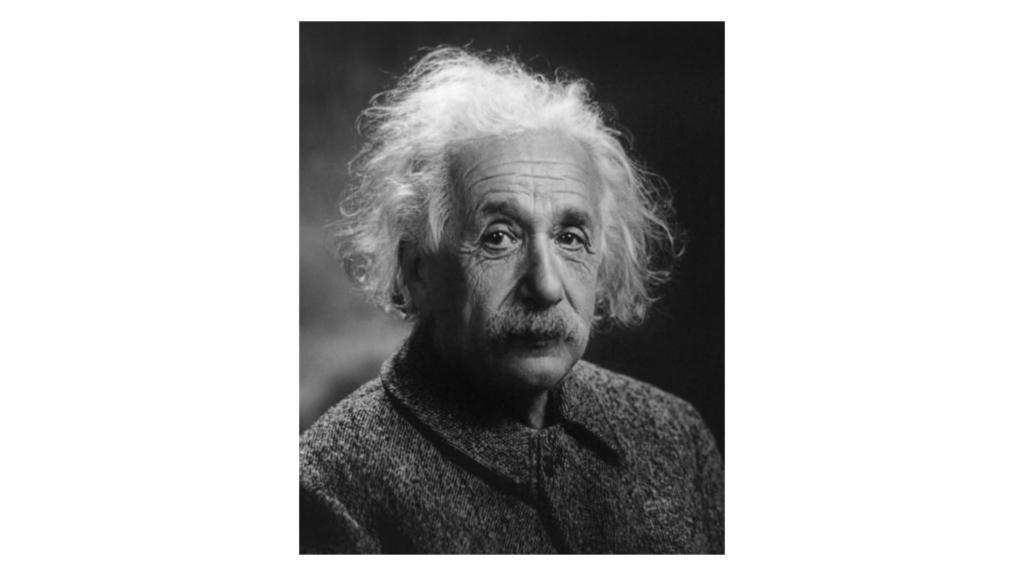Albert Einstein
Albert Einstein (1879–1955), the Architect of Relativity, was the German-born physicist and mathematician whose theories revolutionised our understanding of space, time, and energy. His work reshaped modern physics, earning him global recognition as one of history’s greatest scientific – and mathematical – minds.

Early Life and Education
Albert Einstein was born on 14 March 1879 in Ulm, a small town in southern Germany. His childhood was not marked by obvious brilliance; in fact, he was a late developer and did not start speaking until he was around three years old. His parents were concerned about a possible developmental delay, but Einstein was simply a deep thinker, taking his time to understand the world.
As a child, Einstein’s family moved to Munich, where he began school. Although he was not a model student, he had a natural ability in mathematics and science and soon became interested in the work of great mathematicians and physicists. However, his nonconformist behaviour did not fit well with the rigid schooling system. He frequently questioned authority, a trait that later defined his intellectual life. He excelled in subjects requiring logical reasoning but found rote memorisation and language studies tedious.
Academic Struggles and Early Career
Due to financial difficulties, Einstein’s family relocated to Italy in 1894. He initially stayed in Munich to complete his schooling but soon became disillusioned with the education system. At sixteen, he left school and joined his family in Italy. His next destination was Switzerland, where he pursued studies at the Swiss Federal Polytechnic in Zurich. His first attempt at the entrance exams was unsuccessful, but after rigorous preparation, he passed on his second attempt and earned a degree in physics and mathematics.
Despite his academic achievements, Einstein struggled to find a teaching position after graduation. Instead, he took a job at the Swiss Patent Office in Bern in 1902. Though the role was not prestigious, it provided financial stability and ample time for contemplation. It was during this period that he developed some of his most groundbreaking ideas.
The Miracle Year
In 1905, often referred to as Einstein’s Annus Mirabilis, or Miracle Year, he published four revolutionary papers in Annalen der Physik, one of the leading scientific journals of the time. These papers covered the photoelectric effect, which later earned him the Nobel Prize in Physics in 1921, special relativity, which proposed that the laws of physics are universal for all observers regardless of their speed, Brownian motion, which provided empirical evidence for the existence of atoms, and mass-energy equivalence, encapsulated in the famous equation E = mc².
These discoveries overturned traditional views of time, space, and energy, setting the stage for modern physics.
General Relativity and Global Recognition
Einstein’s reputation as a physicist grew rapidly, and by 1909, he was appointed a full professor at the University of Zurich. He continued pushing the boundaries of science, developing his general theory of relativity, which refined the idea that gravity was not merely a force but a warping of space and time.
By 1915, Einstein had completed his general theory of relativity, and in 1919, his ideas were confirmed when astronomers observed starlight bending around the Sun during a solar eclipse. This discovery propelled Einstein to international fame, and he soon travelled the world delivering lectures on his revolutionary theories.
Later Years
Einstein’s post-war years were marked by political activism, particularly in opposition to war and in support of civil rights. In 1933, as Nazi Germany rose to power, he emigrated to the United States, where he became a member of the Institute for Advanced Study in Princeton, New Jersey. He spent the rest of his life contributing to the development of quantum theory, though he remained sceptical of some aspects of quantum mechanics.
Legacy
Einstein passed away on 18 April 1955 at the age of seventy-six. His legacy extends beyond his scientific contributions—he transformed our understanding of the universe and remains an enduring symbol of curiosity, creativity, and intellectual pursuit. His distinctive wild hair, piercing gaze, and sharp wit made him an iconic figure in both science and popular culture.
Einstein’s life reminds us that genius is not merely about knowing the answers but about asking the right questions.